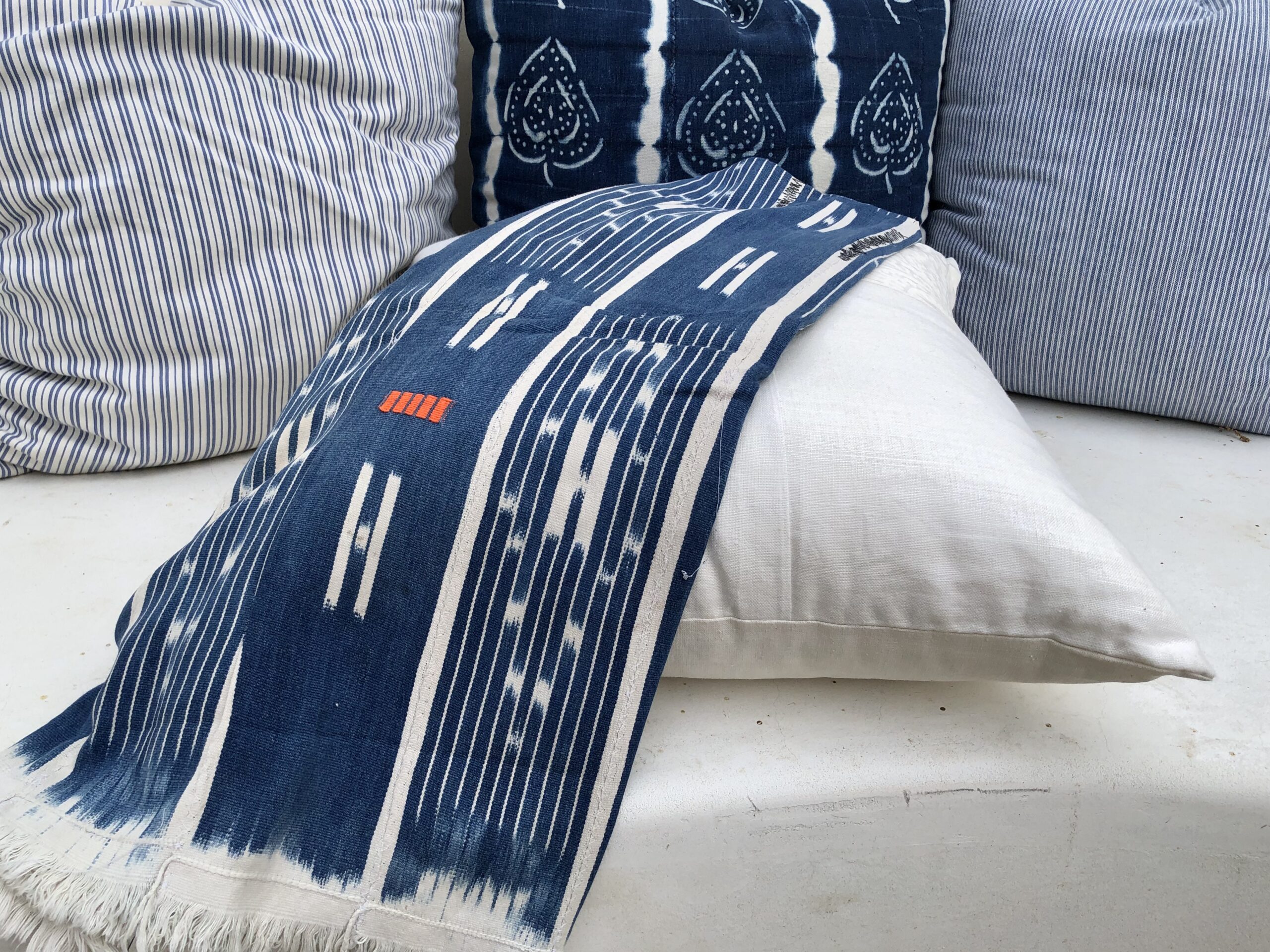Indigo Dye
What is Indigo
Indigo is a magical plant from diverse range of countries including Guatemala, Mexico, Japan, Vietnam, South East Asia, and Africa. Since the plant comes from many regions with different soil and climate environments, there is a stunning range of blue dyes that can be derived from indigo.
The process starts with harvesting the leaves and stems, typically done by women who place them in large rattan baskets carried on their backs as they return home.
Making the Indigo Dye
Next, they fold the plant over itself and place it in large containers of water to sit and macerate for a few days, slowly releasing its color and fermenting the water. To assist the fermentation process, slaked lime (calcium hydroxide) is added to the mixture before women and kids begin stirring the water to incorporate oxygen into the mixture and develop the rich blue color. 
This colorful liquid gold is called a VAT and it usually takes about 7-10 days for the mixture to fully ferment. When the fermentation is complete, bubbles and SCOBY (a symbiotic culture of bacteria & yeast) float to the top of the container.
At this point, cleaned garments and cloth can be dipped in the VAT to begin the skilled and beautiful process of dyeing.

Chemical Transformation of Indigo
The VAT mixture is blue, but as the fabric is dipped in, it becomes yellow. As it is removed from the liquid and exposed to air, the oxidation transforms the yellow color into the magical blue of indigo. Some garments will be dipped in the VAT just once, but depending on the shade of blue desired, it may be dipped a few more times to develop a deeper tone. 
African Method in Benin
Although the process of creating the indigo dye and using it to dye garments is similar in most countries, each region has its unique method of harvesting and producing the dye.One very different method was developed in Benin, Africa where they gather the indigo leaves and stems from nearby jungles.
Rather than growing the plants themselves, they explore their environment to find naturally growing plants to harvest. Once they return, the leaves are smashed in bowls with a wooden stick until the paste can be formed into small balls. After these indigo paste balls have dried out in the heat of the sun, they are placed in water with ashes, then covered and left to ferment. Eventually, a thin later of green residue forms on top of the liquid, and when locals determine that the water has a bitter enough taste, they know it is ready for dyeing. As always, the fabric is then dipped into the dye and rinsed, to be repeated as many times as needed to achieve the desired blue shade.

Water is Essential
From the process of creating the indigo dye to dyeing the garments, water is a crucial element. Therefore, it is very common to see indigo dyeing near rivers. After dipping large textiles in the dye, locals rinse them in running rivers and spread them across the ground to naturally dry in the sun.

Creating Motifs on Indigo Dye in India
The artists must plan out their designs beforehand to create patterns and motifs on the final product, especially if they want white sections in their work.
To get the white designs, they wet the washed fabric, then stamp it with carved homemade stamps covered in mud. Then, the fabric is carefully dipped into the indigo VAT. Once the fabric and mud dries, the mud begins cracking off, leaving behind a beautiful blue and white pattern for us to enjoy!


